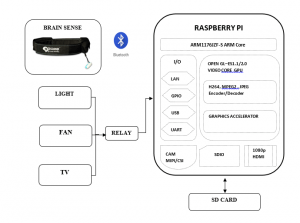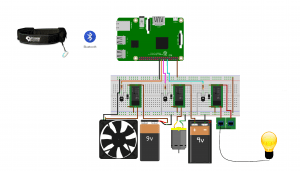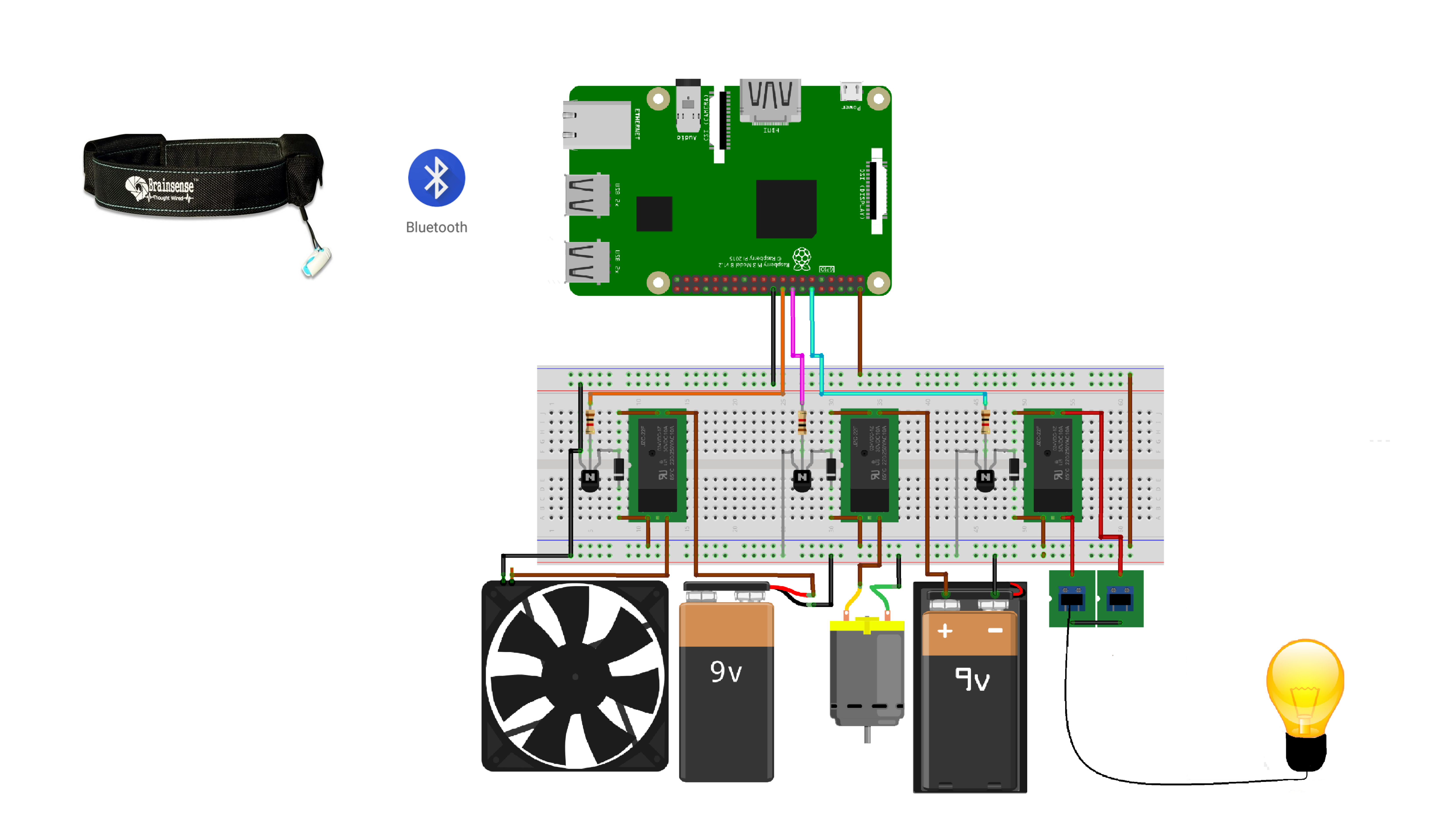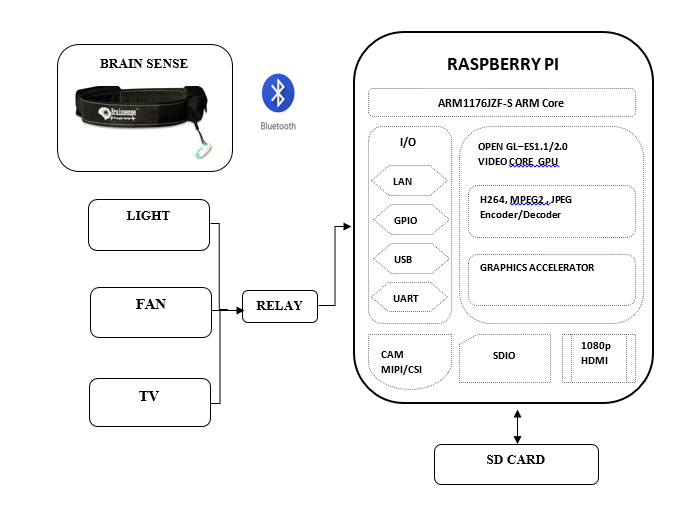Description
Brain Controlled Home Automation using Raspberry Pi
ABSTRACT
In our society there are more people suffering from paralytic diseases causes them several disabilities like they are unable to talk and unable to move physically and unable to express their everyday basic needs, but they can still use their eyes and sometimes move their heads. This Project is working under the principle of Brain-Computer Interface (BCI) Brain Controlled Home Automation using Raspberry Pi
Our model helps them to operate home appliances by having eyes blink. This system is having a core system like Raspberry Pi, However, the appliances can be chosen by having priority for appliances. In this application. Appliances are switched on by having one blink and switched off by making a double blink. In this system, priority is an order of light, fan, and Tv. We can operate more appliances by giving furthermore order of priorities. Brain Controlled Home Automation using Raspberry Pi
INTRODUCTION
The Brain-Computer Interface (BCI) is one of the communication channels used to make an interaction between the human brain and a digital computer. BCI monitors EEG waves from the Brain. EEG ?Electroencephalography which monitors an Electrical property of the Brain along with the Scalp (Non-invasive). The Neurosky Mindwave mobile / BrainSense measures intentionally directed EMG activity (blink strength). ? A brain-computer interface (BCI) is a new communication channel between the human brain and a digital computer. The ambitious goal of a BCI is finally the restoration of movements, communication, and environmental control for handicapped people
The Raspberry Pi is a credit card-sized single computer or SoC that uses ARM1176JZF-Score. SoC, or System on a Chip, is a method of placing all necessary electronics for running a computer on a single chip. Raspberry Pi needs an Operating system to start up. In the aim of cost reduction, the Raspberry Pi omits any onboard non-volatile memory used to store the bootloaders, Linux Kernels, and file systems as seen in more traditional embedded systems. Rather, an SD/MMC card slot is provided for this purpose. After bootload, as per the application program, Raspberry Pi will get executed.
EXISTING SYSTEM
In the existing system, every application is developed using Matlab, it requires a computer for processing signal and processing applications through Matlab.
PROPOSED SYSTEM
? ? ? ? ? ? ? ? ? ? ? ? ? ? ?Since the system uses Raspberry Pi, it does not require Matlab for processing the signal. Raspberry Pi has inbuilt Bluetooth so that there is no need for external Bluetooth. We can operate any home appliances which is connected through a relay with Raspberry Pi. Raspberry Pi can process the signal and can able to classify the brain waves which is done using Python programming.
BLOCK DIAGRAM

BLOCK DIAGRAM DESCRIPTION
Home appliances such as light, fan, and Tv which are connected with GPIO pins of Raspberry Pi through the Relay. Mindwave mobile/ BrainSense which also has inbuilt Bluetooth is connected with Raspberry Pi.
CIRCUIT DIAGRAM
PROJECT DESCRIPTION

In this system, Raspberry Pi acts as a core, and these applications don’t require any laptop/pc with Matlab. Since it is a mini Pc, it will process the signal on its own. When the system begins to run, priority begins with respect to time. It will ask for appliance light first, we have to make a single blink or double blink for on and off. For each minute it switches over from one appliance to another. So we have to identify the current application displayed on the monitor and then we have to blink.
HARDWARE REQUIRED
- Raspberry Pi
- Mindwave mobile or Brain sense
- Home automation kit (Appliances and Relay)
SOFTWARE REQUIRED
- Raspbian OS
- SD Card Formatter
- Win32 disk imager
CONCLUSION
This system can be easily reconfigurable for further appliances. We can add more appliances by having some order of priorities. The intensity of Eyeblink differs for every human, we can reconfigure the code for high accuracy for blink detection.




































































































































































































































































































































































































































































































































































































































































































































































































































































































































































































































































Customer Reviews
There are no reviews yet.